-
 Bitcoin
Bitcoin $107,341.7259
0.15% -
 Ethereum
Ethereum $2,438.6204
0.70% -
 Tether USDt
Tether USDt $1.0003
-0.02% -
 XRP
XRP $2.1866
1.94% -
 BNB
BNB $649.0952
0.36% -
 Solana
Solana $150.9602
5.63% -
 USDC
USDC $0.9999
0.00% -
 TRON
TRON $0.2742
0.40% -
 Dogecoin
Dogecoin $0.1645
1.93% -
 Cardano
Cardano $0.5669
1.18% -
 Hyperliquid
Hyperliquid $37.8286
4.19% -
 Bitcoin Cash
Bitcoin Cash $491.4669
-2.74% -
 Sui
Sui $2.8150
3.06% -
 Chainlink
Chainlink $13.4184
2.91% -
 UNUS SED LEO
UNUS SED LEO $9.0809
0.27% -
 Avalanche
Avalanche $18.0295
2.60% -
 Stellar
Stellar $0.2396
1.19% -
 Toncoin
Toncoin $2.8587
0.13% -
 Shiba Inu
Shiba Inu $0.0...01160
2.59% -
 Litecoin
Litecoin $86.4192
1.45% -
 Hedera
Hedera $0.1486
1.19% -
 Monero
Monero $308.4324
0.87% -
 Polkadot
Polkadot $3.4202
1.43% -
 Bitget Token
Bitget Token $4.6436
-0.34% -
 Dai
Dai $0.9998
-0.02% -
 Ethena USDe
Ethena USDe $1.0002
0.00% -
 Uniswap
Uniswap $7.1527
3.29% -
 Pi
Pi $0.5357
-8.45% -
 Pepe
Pepe $0.0...09588
4.61% -
 Aave
Aave $259.9759
0.81%
GameFi Terminology: Unique Expressions in the Blockchain Game Field
GameFi blends gaming with finance, introducing terms like P2E, NFTs, and yield farming, essential for understanding blockchain-based gaming ecosystems and their economic models.
May 10, 2025 at 08:35 am
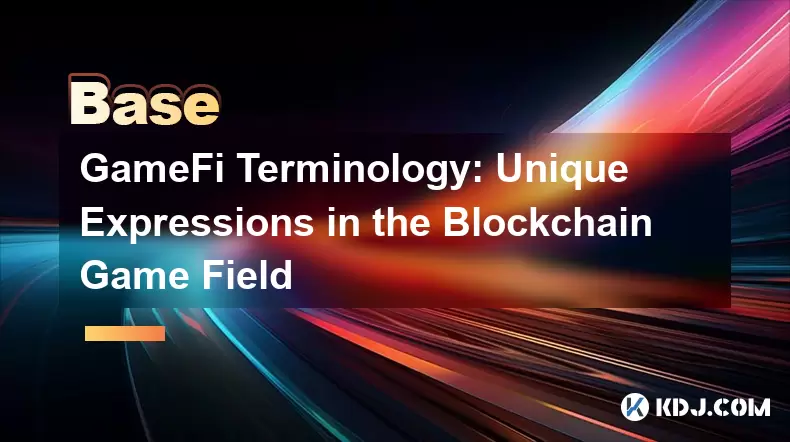
The world of GameFi, a portmanteau of "gaming" and "finance," has introduced a plethora of unique terminologies that are essential for understanding and participating in blockchain-based gaming ecosystems. These terms often blend traditional gaming concepts with blockchain and cryptocurrency elements, creating a specialized vocabulary that is crucial for enthusiasts and investors alike. In this article, we will delve into some of the most distinctive expressions used in the GameFi sector, providing a comprehensive overview of their meanings and applications.
Play-to-Earn (P2E)
Play-to-Earn, or P2E, is a revolutionary concept in the GameFi industry that allows players to earn real-world value through in-game activities. Unlike traditional games where rewards are limited to virtual items or points, P2E games enable players to earn cryptocurrencies or non-fungible tokens (NFTs) that can be traded or sold on various platforms. This model has transformed gaming into a potential source of income, attracting a wide range of participants from casual gamers to professional players.
P2E games typically involve completing tasks, achieving milestones, or engaging in competitive play to earn rewards. These rewards can vary from game to game but often include tokens that can be used within the game's ecosystem or exchanged for other cryptocurrencies. The integration of blockchain technology ensures that these transactions are transparent and secure, fostering trust among players and investors.
Non-Fungible Tokens (NFTs)
Non-Fungible Tokens, or NFTs, are a cornerstone of the GameFi ecosystem. These digital assets represent ownership or proof of authenticity of a unique item or piece of content on a blockchain. In the context of GameFi, NFTs can represent in-game items such as characters, weapons, land, or other virtual assets that players can own, trade, or sell.
The use of NFTs in gaming introduces a new level of asset ownership and scarcity. For instance, a rare in-game item represented as an NFT can be sold for a high value due to its uniqueness and demand. This has led to the emergence of NFT marketplaces where players can list their assets for sale, creating a vibrant secondary market for in-game items.
Yield Farming
Yield Farming is a term borrowed from the broader DeFi (Decentralized Finance) space but has found significant application in GameFi. In the context of gaming, yield farming refers to the process of earning rewards by staking or locking up tokens within a game's ecosystem. These rewards can be in the form of additional tokens, which can then be used to enhance gameplay or sold for profit.
Yield farming in GameFi often involves participating in liquidity pools or staking platforms within the game. Players can earn a yield on their staked tokens, which can be reinvested or withdrawn as needed. This mechanism not only incentivizes player engagement but also helps to stabilize the game's economy by encouraging the holding of tokens.
Scholarships
Scholarships in the GameFi world refer to a system where experienced players or investors lend their in-game assets to others, often referred to as scholars, in exchange for a share of the earnings. This model has become particularly popular in games like Axie Infinity, where the initial cost of entry can be prohibitive for some players.
Under a scholarship program, the scholar receives the necessary assets to play the game and earn rewards. In return, they agree to share a portion of their earnings with the asset owner. This system not only democratizes access to GameFi but also creates a symbiotic relationship between asset owners and scholars, fostering community growth and engagement.
Guilds
Guilds in the GameFi sector are organized groups of players who collaborate to achieve common goals within a game. These groups can be formal organizations or informal communities, but they often play a crucial role in the success of players within the ecosystem. Guilds can provide resources, strategies, and support to their members, enhancing their gaming experience and potential earnings.
In addition to fostering community and collaboration, guilds can also participate in larger-scale activities such as tournaments or collective yield farming efforts. Some guilds even manage their own scholarship programs, further extending their influence within the GameFi space. The presence of guilds underscores the social aspect of blockchain gaming, highlighting the importance of teamwork and collective effort.
Tokenomics
Tokenomics refers to the economic model and design of a game's native token. In GameFi, tokenomics plays a critical role in determining the value and utility of in-game assets. A well-designed token economy can incentivize player engagement, maintain a balanced ecosystem, and ensure the long-term sustainability of the game.
Tokenomics in GameFi often includes elements such as token distribution, inflation rates, and mechanisms for earning and spending tokens. Games may employ various strategies to manage their token supply, such as burning tokens to reduce supply or implementing staking rewards to encourage holding. Understanding the tokenomics of a GameFi project is essential for players and investors looking to maximize their returns and navigate the game's economy effectively.
Frequently Asked Questions
Q: How do I get started with a Play-to-Earn game?
A: To get started with a P2E game, you will typically need to follow these steps:
- Choose a Game: Research and select a P2E game that interests you and aligns with your gaming preferences.
- Set Up a Wallet: You will need a cryptocurrency wallet compatible with the game's blockchain (e.g., MetaMask for Ethereum-based games).
- Acquire Initial Assets: Purchase or acquire the necessary in-game assets, such as NFTs or tokens, to start playing. Some games offer scholarships or other entry methods for new players.
- Start Playing: Engage in the game's activities to earn rewards, which can be in the form of tokens or NFTs.
Q: What are the risks associated with investing in GameFi projects?
A: Investing in GameFi projects carries several risks, including:
- Market Volatility: The value of in-game tokens and NFTs can fluctuate significantly, leading to potential losses.
- Regulatory Uncertainty: The regulatory environment for cryptocurrencies and blockchain games is still evolving, which can impact the viability of GameFi projects.
- Game Sustainability: Not all GameFi projects will succeed long-term, and the failure of a game can result in the loss of invested assets.
- Scams and Fraud: The crypto space is rife with scams, and it's crucial to conduct thorough research before investing in any GameFi project.
Q: Can I earn a living from Play-to-Earn games?
A: While some players have reported earning significant income from P2E games, it is not guaranteed and depends on various factors such as the game's popularity, the player's skill level, and the time invested. It's important to approach P2E games as a potential source of supplementary income rather than a primary means of livelihood.
Q: How do I choose the right GameFi project to invest in?
A: When choosing a GameFi project to invest in, consider the following factors:
- Team and Community: Research the project's team and community to gauge their credibility and engagement.
- Gameplay and Mechanics: Evaluate the game's gameplay and mechanics to ensure they are engaging and sustainable.
- Tokenomics: Understand the project's tokenomics to assess its economic model and potential for growth.
- Market Trends: Stay informed about market trends and the overall sentiment towards the project within the crypto community.
Disclaimer:info@kdj.com
The information provided is not trading advice. kdj.com does not assume any responsibility for any investments made based on the information provided in this article. Cryptocurrencies are highly volatile and it is highly recommended that you invest with caution after thorough research!
If you believe that the content used on this website infringes your copyright, please contact us immediately (info@kdj.com) and we will delete it promptly.
- AI Token Taking Over: Why Smart Investors are Eyeing Audited Crypto Ruvi AI
- 2025-06-29 04:30:12
- Ethereum, AI Tokens, and Growth: Is Ruvi AI the Next Big Thing?
- 2025-06-29 04:30:12
- Hedera Price: Decoding Technical Signals and Upside Potential
- 2025-06-29 04:50:13
- Altcoin Rally on the Horizon? Decoding the Potential Boom
- 2025-06-29 04:35:12
- On-Chain Data Deep Dive: Altcoin Growth & Transaction Volume Insights
- 2025-06-29 05:30:13
- Cryptos, Real Growth, 2025: Navigating the Landscape
- 2025-06-29 05:30:13
Related knowledge
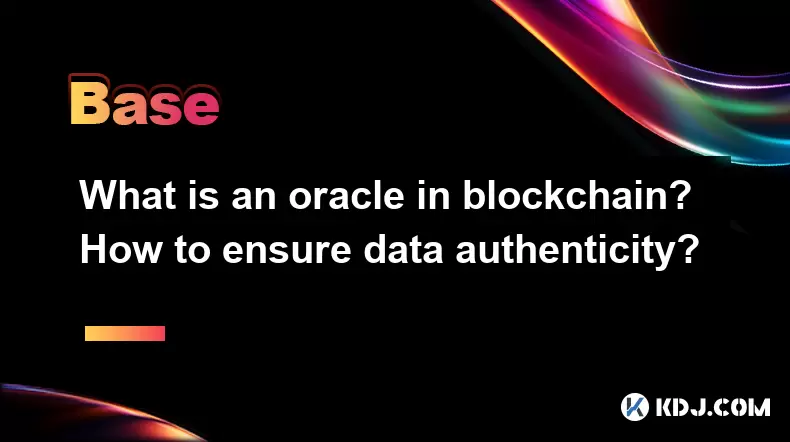
What is an oracle in blockchain? How to ensure data authenticity?
Jun 19,2025 at 08:49pm
Understanding the Role of an Oracle in BlockchainIn the context of blockchain technology, an oracle serves as a bridge between the blockchain and external data sources. While blockchains are inherently secure and decentralized, they cannot access real-world information on their own. Oracles enable smart contracts to interact with off-chain data such as ...
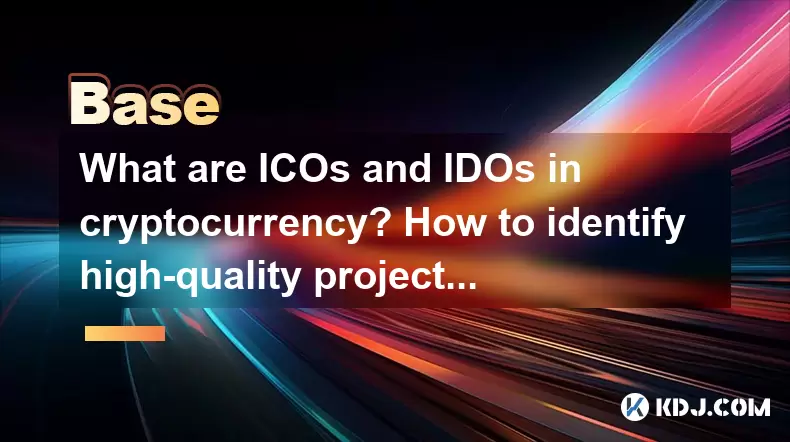
What are ICOs and IDOs in cryptocurrency? How to identify high-quality projects?
Jun 22,2025 at 11:49am
Understanding ICOs in CryptocurrencyInitial Coin Offerings (ICOs) are fundraising mechanisms used by cryptocurrency startups to raise capital for their projects. In an ICO, a company creates and sells its own tokens to investors in exchange for established cryptocurrencies like Bitcoin or Ethereum. The process typically involves the release of a whitepa...
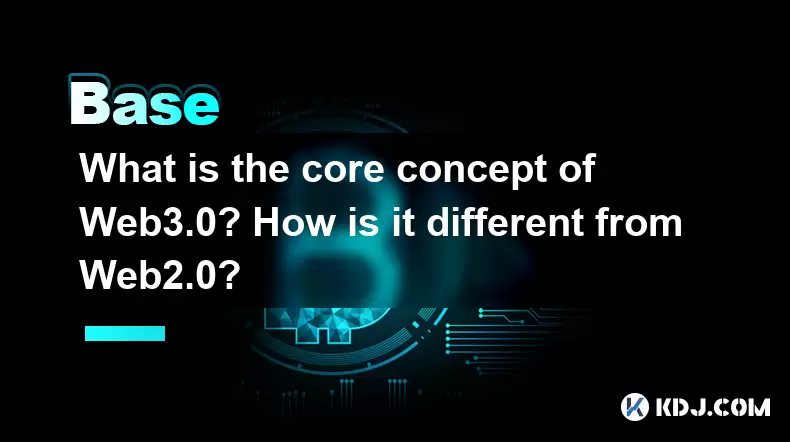
What is the core concept of Web3.0? How is it different from Web2.0?
Jun 21,2025 at 05:56pm
Decentralization as the Foundation of Web3.0The core concept of Web3.0 revolves around decentralization, which fundamentally challenges the centralized architecture of Web2.0. In Web3.0, control and ownership are distributed across a network rather than being held by a central authority or corporation. This is achieved primarily through blockchain techn...
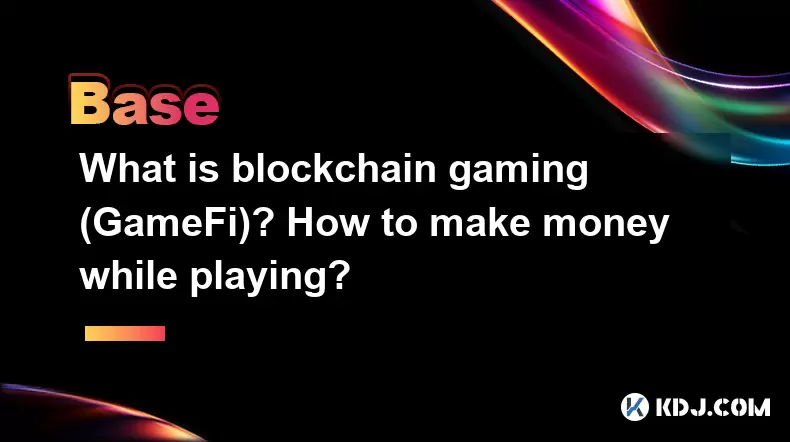
What is blockchain gaming (GameFi)? How to make money while playing?
Jun 20,2025 at 07:56am
Understanding Blockchain Gaming (GameFi)Blockchain gaming, often referred to as GameFi, is a fusion of blockchain technology and video games. It enables players to own in-game assets through non-fungible tokens (NFTs) and earn rewards via cryptocurrencies or token-based systems. Unlike traditional games where items are controlled by centralized develope...
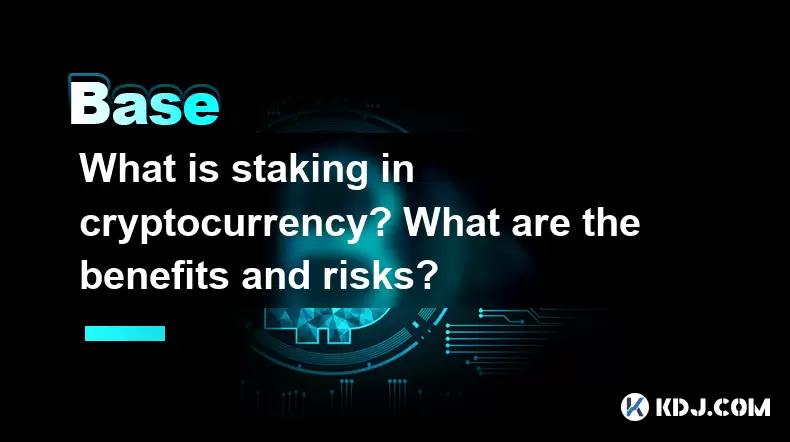
What is staking in cryptocurrency? What are the benefits and risks?
Jun 22,2025 at 10:01am
Understanding the Concept of Staking in CryptocurrencyStaking in cryptocurrency refers to the process of actively participating in transaction validation on a blockchain network that uses a Proof-of-Stake (PoS) consensus mechanism. Instead of miners competing to solve complex mathematical puzzles as in Proof-of-Work systems like Bitcoin, PoS blockchains...
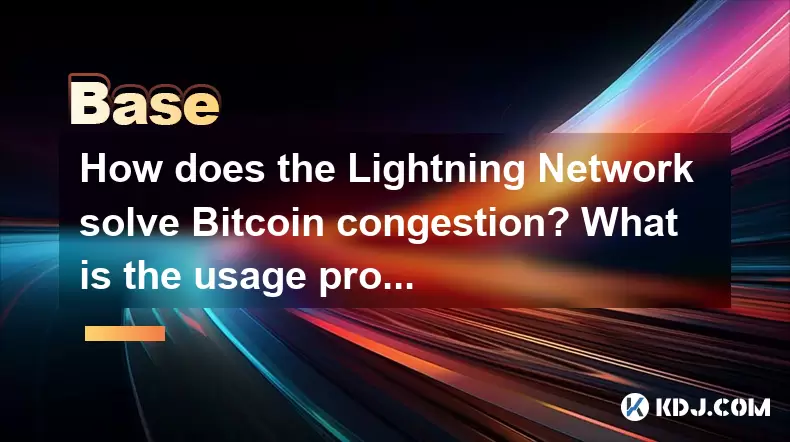
How does the Lightning Network solve Bitcoin congestion? What is the usage process?
Jun 23,2025 at 06:21pm
Understanding Bitcoin Network CongestionBitcoin, as a decentralized digital currency, operates on a blockchain that records every transaction in a public ledger. Each block has a limited size, typically 1 megabyte, which allows for only a certain number of transactions per second (TPS). When the number of transactions increases, the network becomes cong...

What is an oracle in blockchain? How to ensure data authenticity?
Jun 19,2025 at 08:49pm
Understanding the Role of an Oracle in BlockchainIn the context of blockchain technology, an oracle serves as a bridge between the blockchain and external data sources. While blockchains are inherently secure and decentralized, they cannot access real-world information on their own. Oracles enable smart contracts to interact with off-chain data such as ...

What are ICOs and IDOs in cryptocurrency? How to identify high-quality projects?
Jun 22,2025 at 11:49am
Understanding ICOs in CryptocurrencyInitial Coin Offerings (ICOs) are fundraising mechanisms used by cryptocurrency startups to raise capital for their projects. In an ICO, a company creates and sells its own tokens to investors in exchange for established cryptocurrencies like Bitcoin or Ethereum. The process typically involves the release of a whitepa...

What is the core concept of Web3.0? How is it different from Web2.0?
Jun 21,2025 at 05:56pm
Decentralization as the Foundation of Web3.0The core concept of Web3.0 revolves around decentralization, which fundamentally challenges the centralized architecture of Web2.0. In Web3.0, control and ownership are distributed across a network rather than being held by a central authority or corporation. This is achieved primarily through blockchain techn...

What is blockchain gaming (GameFi)? How to make money while playing?
Jun 20,2025 at 07:56am
Understanding Blockchain Gaming (GameFi)Blockchain gaming, often referred to as GameFi, is a fusion of blockchain technology and video games. It enables players to own in-game assets through non-fungible tokens (NFTs) and earn rewards via cryptocurrencies or token-based systems. Unlike traditional games where items are controlled by centralized develope...

What is staking in cryptocurrency? What are the benefits and risks?
Jun 22,2025 at 10:01am
Understanding the Concept of Staking in CryptocurrencyStaking in cryptocurrency refers to the process of actively participating in transaction validation on a blockchain network that uses a Proof-of-Stake (PoS) consensus mechanism. Instead of miners competing to solve complex mathematical puzzles as in Proof-of-Work systems like Bitcoin, PoS blockchains...

How does the Lightning Network solve Bitcoin congestion? What is the usage process?
Jun 23,2025 at 06:21pm
Understanding Bitcoin Network CongestionBitcoin, as a decentralized digital currency, operates on a blockchain that records every transaction in a public ledger. Each block has a limited size, typically 1 megabyte, which allows for only a certain number of transactions per second (TPS). When the number of transactions increases, the network becomes cong...
See all articles

























































































